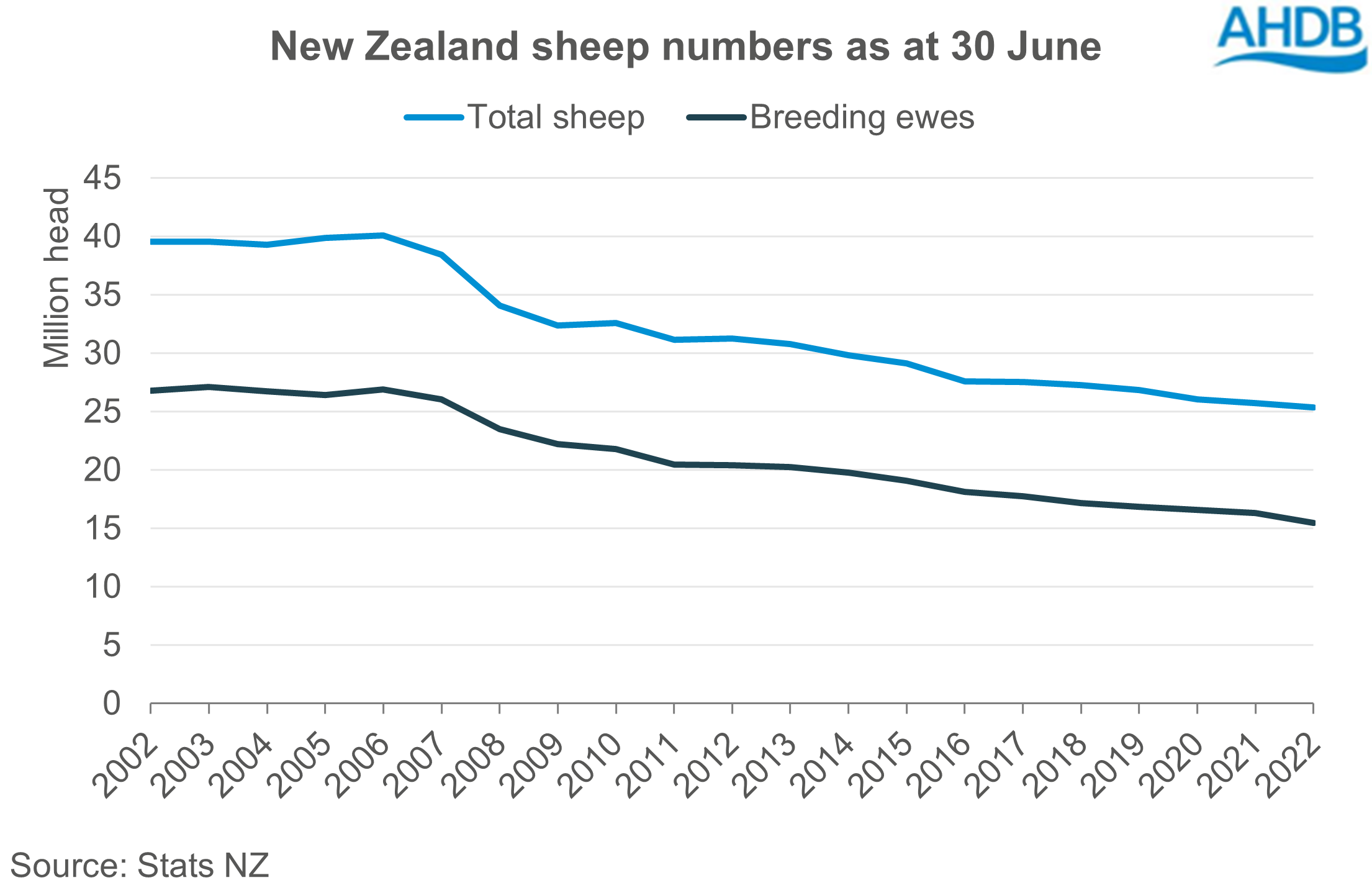New Zealand's ratio of sheep to people lowest in over 150 years
Friday, 2 June 2023
The latest data from Stats NZ shows that as of 30 June 2022, the New Zealand national flock stood at 25.3 million sheep. This was 2% lower than the year before and continues the long-term contraction of the national flock.
Since 2002, the NZ national flock has shrunk by 14.2 million head (or -36%). This puts the ratio of sheep to people below 5:1 for the first time since records began in the 1850s, according to Stats NZ. For context, in the 1980s the ratio peaked at around 22:1.

Several factors have contributed to this decline; perhaps the removal of farm subsidy in the 1980s being the most instrumental. More recently sheep numbers have been pressured by factors including lower global wool prices, adverse weather and increased tree-planting for carbon-offsetting schemes.
Even though New Zealand’s sheep numbers have declined, the volume of sheep meat exported has remained relatively stable. Over the last 10 years for example, the national flock has contracted by 19%, while exports have fluctuated around 400,000 tonnes (+7% between 2012–2022), demonstrating an increase in productivity.
What’s the outlook for NZ lamb?
Beef & Lamb New Zealand forecast that declining ewe numbers will have contributed to the 2022/23 lamb crop shrinking by 8.5% from the previous season. Exports of sheep meat therefore were expected to decline.
Since October however (the start of New Zealand’s export season), sheep meat export volumes have grown slightly year-on-year (+3%). Market reports suggest that exporters have not been prioritising the UK due to lower returns – likely influenced by weaker domestic demand – and instead focusing elsewhere, namely China. This is borne out in export figures; the quantity of sheep meat shipped to China is up 17% for the season-to-date, while UK-bound exports have fallen by 37%.
Despite a positive start to the season overall, there could be some downward pressure approaching New Zealand export volumes. China’s foodservice market is sluggishly recovering from COVID-19 lockdowns (lifted earlier in the year), and the upcoming summer period is a time where lamb falls out of favour with Chinese consumers. At the same time, we’re now entering the UK’s new season production period, meaning supply increases for the remainder of the year. New Zealand’s slaughter levels look to remain lower for the rest of the year, which could further restrict exports.

Sign up for regular updates
You can subscribe to receive Beef and Lamb market news straight to your inbox. Simply fill in your contact details on our online form.
While AHDB seeks to ensure that the information contained on this webpage is accurate at the time of publication, no warranty is given in respect of the information and data provided. You are responsible for how you use the information. To the maximum extent permitted by law, AHDB accepts no liability for loss, damage or injury howsoever caused or suffered (including that caused by negligence) directly or indirectly in relation to the information or data provided in this publication.
All intellectual property rights in the information and data on this webpage belong to or are licensed by AHDB. You are authorised to use such information for your internal business purposes only and you must not provide this information to any other third parties, including further publication of the information, or for commercial gain in any way whatsoever without the prior written permission of AHDB for each third party disclosure, publication or commercial arrangement. For more information, please see our Terms of Use and Privacy Notice or contact the Director of Corporate Affairs at info@ahdb.org.uk © Agriculture and Horticulture Development Board. All rights reserved.

